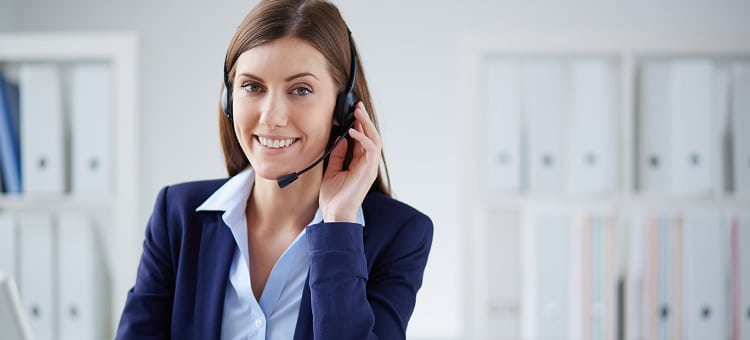Technology is continually being integrated into organizations regardless of the industry. Its purpose is to improve efficiency, and productivity, while saving time, effort and cost.
This also gives rise to increased customer queries, technical requests, and issues. An IT help desk is the link that makes technology easy to understand for employees and customers alike.
The IT team can help employees do their jobs better and improve customer experience with consistent communication and quick resolution.
You need the right tools, talent, and processes in place for the help desk team to be functional and efficient. Let us look at IT help desk best practices that can elevate the quality of service offered.
10 IT Help Desk Best Practices
You might be tempted to go all out and revamp your help desk overnight. But that would not be a wise choice. The change can be overwhelming for employees and customers. So instead, iterative growth would be the way to go.
Here are 10 IT help desk practices that can help differentiate your business in the marketplace.
1. Streamline and Optimize Existing Processes
Take a look at your existing help desk processes. Are the tools and software being utilized to their utmost potential? Are all team members following the process outline? If not, what bottlenecks are they facing?
The answers to these questions can help identify improvement areas. You can optimize existing processes and help employees do their job better. This way, you do not have to spend additional costs on tools or training. And in cases where it is required, the spending could be minimal.
2. Choose Help Desk Tools with Care
When choosing a help desk software, understand how it will fit into your existing IT infrastructure, time, and cost of training efforts.
The software should make it easier for employees to access tickets, update, share knowledge and effectively collaborate with other teams.
You might think choosing software with the most features would be ideal. But that is not always the case. These features may be underutilized while you continue paying money for them. The software choice should solely depend on your unique business requirements.
3. Automate Repetitive Tasks
Repetitive tasks that require manual effort can be time-consuming and boring. As a result, it impacts productivity and keeps the employees away from focusing on critical business tasks.
This does not mean you abandon repetitive tasks, but you need to find a better way to execute them. Using technology, you can automate such tasks. This can help employees focus on important jobs and also help customers get quick responses and resolutions.
4. Hire the Right Talent
An helpdesk provider needs employees that have the technical expertise to handle employee and customer queries and issues. IT issues can get complex, and resources like documentation alone may not be enough.
If issues keep getting escalated to IT specialists, it is a waste of time and resources. It can also be frustrating for customers as the resolution gets delayed.
If hiring and retaining talent is a concern for your organization, consider working with an MSP that can offer you immediate access to technical expertise.
5. Encourage Documentation
From the movement a service representative received a ticket to how the issue was handled, multiple steps could be involved.
Encourage employees to document information in tickets and service requests. Note the issue in detail, troubleshooting steps, and current status.
Any service representative can provide accurate updates if the customer calls for an update. In addition, ticket documentation can help other representatives resolve similar issues more quickly.
6. Encourage Knowledge Sharing
The goal of the IT help desk is to provide quality and consistent support. And unless all employees do not possess or have access to a similar level of technical knowledge, the goal can be challenging to achieve.
Thus it is important to create a knowledge base and encourage employees to contribute towards it. New employees can also use this knowledge base to understand how things work, significantly simplifying the learning curve.
7. Focus on Improving Customer Experiences
Customer satisfaction is one of the metrics that let you know how good your help desk is. If customers have to deal with delays in communication, inconsistent replies, and poor soft skills, these factors can overshadow the actual resolution provided.
Customers want to be heard and treated like a person, not merely statistics. According to Salesforce research, for 80% of customers, the experience they receive from businesses is as important as its products and services.
66% of customers expect businesses to understand their unique requirements and expectations.
So, customer service should be adopted as a culture throughout the organizations. Your help desk team should be equipped with not just providing resolution but providing it in the right way.
8. Document SLAs
Provide employees with tangible goals to achieve. For example, customer satisfaction could be your aim, but what does it mean for employees?
SLAs help define services that your team is capable of providing and the quality metrics they will meet. This helps set clear expectations and provides means to measure the team’s performance.
Help desk availability, response time, and resolution time are factors that can be included in SLA agreements.
9. Measure Performance
You have the right help desk software, talent, and processes in place. But how do you know if these practices are working? First, you need to measure performance.
Some performance metrics like ticket volume, first response time, resolution rate, and first call resolution can help.
Look at measuring performance as an opportunity to grow. If your team lacks any metrics, identify barriers and work on eliminating them.
10. Choose the Right Service Desk Provider
Small and medium-sized businesses may not have the resources for a dedicated IT help desk team. And large organizations might prefer outsourcing so they can focus on core deliverables.
In such cases, working with an MSP would be an ideal option. An MSP can work with your existing IT infrastructure, align technical resources, and provide audit reports while sticking to SLAs and helping manage the IT budget better.
Consult with an MSP help desk and develop a custom support plan suited to your requirements.
Summary
IT help desk is the bridge between technology and your employees and customers. Practices like choosing the right software, streamlining processes, encouraging documentation and knowledge sharing, and automating repetitive tasks can help improve employee efficiency and productivity.
Practices like documenting SLAs, measuring performance, and listening to customers can significantly improve the quality of service offered.
You can consult with an MSP to understand their offerings and how they can help build a functional and efficient help desk team.







